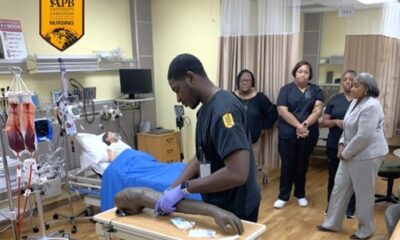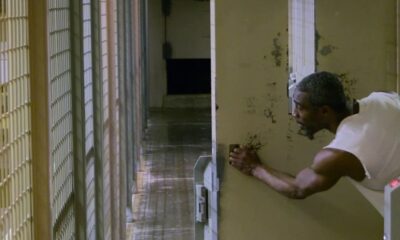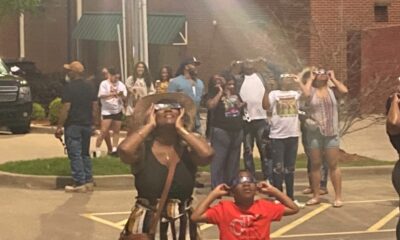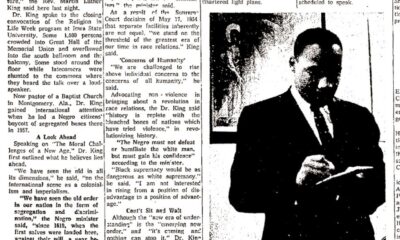News
Wearing Orange to Stop the Red

In Chicago today and around the nation, voices will unite against gun violence. It is National Gun Violence Awareness Day recognized by wearing orange. The annual event started in 2015 and is tied to the shooting death of 15 year-old Hadiya Pendleton who was gunned down while waiting at a Chicago bus stop less than a week after she traveled to participated in events related to President Barack Obama’s second inauguration.
In the three years since Hadiya’s murder, little seems have changed in the Windy City. The headlines are disheartening and familiar this week: another violent weekend in Chicago. Over the Memorial Day weekend, 69 shootings were reported. Authorities and residents fear it is a harbinger of a blistering summer certain to feature the blood of the city’s young and Black.
Sierra Coleman, a Chicago psychotherapist, views the violence from a clinical perspective as well as that of a community advocate. “I think there are multiple layers (to the problem) that we fail to address, and the first one is the issue of poverty. And, the reason poverty is the largest issue is because poverty impacts how you live, what kind of education you get, your access to a job or lack thereof, and your access to opportunity.”
The killings are occurring primarily on the South and West Sides of Chicago where the landscape is dominated by abandoned buildings, broken sidewalks, and trash-strewn streets. Gangs have staked their turf. Survival is predicated on quickly learning the calculus of navigating the streets.
“So, when I walk through a neighborhood, am I gang-affiliated? And if I’m not, I run the risk of being shot. The government is failing to treat the gang issue, and that’s systemic. It’s being going on for years in Chicago,” Coleman explains.
Gang rivalry was blamed in the murder of Hadiya. Since then, other innocent lives have been claimed by a bullet intended for a gang member. Tragically, according to Coleman, the gangs often come for “children who refuse to join.”
Coleman lives in Hyde Park, a community of affluence located close to the city’s more crime-ridden South Side where many of the young victims of violence live. It is also home to the youth she believes need the emotional services provided by the healthcare agency where she works.
But even with the Affordable Care Act, Coleman is concerned many of them still don’t have insurance, and the free programs are full and after-school programs are being eliminated for lack of funding.
Her frustration is tangible. “I don’t have enough people to treat all of these kids,” she says and quickly points out how crucial mental health programs are for children facing a cycle of violence.
She adds, “Never having a conscious positive role model…a person who is teaching them how to be an adult is problematic. It’s an issue that is compounded over generations. Most important for children is having the ability to model…and if I don’t have anyone to model…” her voice trails off.
Mayor Rahm Emmanuel appointed a new police Superintendent in late March. But, Eddie Johnson, a veteran police officer, inherited an embattled department facing budget cuts. Efforts to stop the violence rely on police working overtime instead of hiring more, but Coleman says “overpolicing is not the solution.”
It’s clear neither hiring more officers or extending their hours will guarantee a new narrative especially with the city already logging more murders this year than it did last year at this point. Summer is inevitable, and many of those who live in Chicago believe another season of grief is, too. But it won’t stop them from hoping and wearing orange…if only for one day.

-

 Black History4 months ago
Black History4 months agoThe untold story of a Black woman who founded an Alabama hospital during Jim Crow
-

 Featured8 months ago
Featured8 months ago‘No Closure’ In Town Where Five Black Residents Were Either Murdered, Died Suspiciously Or Are Missing
-

 Black History9 months ago
Black History9 months agoBlack History Lost and Found: New Research Pieces Together the Life of Prominent Texas Surgeon and Activist
-

 Featured8 months ago
Featured8 months agoFounder of “The Folding Chair” Podcast Calls Montgomery’s Brawl ‘Karma’
-

 Featured8 months ago
Featured8 months agoThousands ‘Live Their Dream’ During National Black Business Month
-

 Featured10 months ago
Featured10 months agoJuneteenth And ‘246 Years Of Free Labor’ Are Key To Conversations About Reparations









